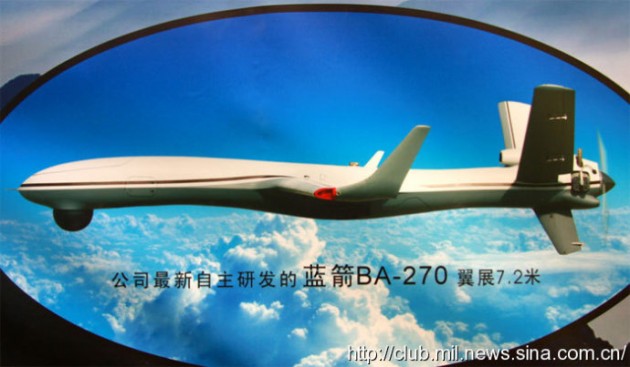China’s (Not So Scary) Drone Army
Posted on

WASHINGTON: How many drones is Beijing building? Relying on unidentified “estimates,” the Pentagon’s latest Chinese Military Power report says “China plans to produce upwards of 41,800 land- and sea-based unmanned systems, worth about $10.5 billion, between 2014 and 2023,” including armed and stealthy unmanned aircraft. (More on the report here). That sentence gave rise to at least one story about China’s robotic “army.” But all drones are not created equal, experts from the tech-savvy Center for a New American Security reminded me this afternoon.
“It’s not like the sky is falling, but it would suggest a future where China will have better situational awareness over its surrounding regions,” said Paul Scharre, director of the future-looking 20YY Warfare Initiative at CNAS.
“Are we talking about 42,000 commercial off-the-shelf surveillance drones or 42,000 high-end or stealth combat drones? That clearly makes a difference in the threat assessment,” said CNAS research associate Kelley Sayler. “Judging by the projected budget — a rather modest $10.5 billion over 10 years — it would seem that the bulk of Chinese UAV investments will be in lower- to mid-end systems. ”
$10.5 billion for 42,000 drones would mean $250,000 apiece, Sayler noted, “roughly comparable to the cost of a hand-launched RQ-11 Raven system.” China tends to get more value for its defense dollar than the United States — corruption is a chronic problem but R&D is much cheaper when you can just steal the data — but even if you take that quarter-million-dollar figure and multiply it by eight, you still fall short of the $5 million cost of a mid-tier armed drone like the Army’s MQ-1C Grey Eagle.
So we can be better sure that China’s not buying an invincible robot army. But Beijing doesn’t need cutting edge tech to get real benefits. While the US is experimenting with highly autonomous and swarming robots, it’s worth remembering that the unarmed surveillance version of the Predator drone entered service 20 years ago.
“The underlying technology behind something like Predator or Reaper or a Global Hawk, it’s not that complicated,” Scharre told me. “China is obviously excellent at reverse engineering things across the board and a lot of what they’re doing looks kind of like that.”
Where China can innovate, however, is in operating drones with less infrastructure and overhead than the US military. “If they’re using drones for surveillance…. that doesn’t mean they need 90 analysts behind every drone orbit,” he said. They don’t even necessarily need communications satellites: “China doesn’t have to project power around the globe like we do in places like Afghanistan, they’re looking to project power locally” — over the Senkaku Islands, say, or the Scarborough Shoal, or the Himalayas — “so they may be able to do with line-of-sight [radio] networks and relay networks using other drones.” (Because drones can loiter longer in the air than manned aircraft, they make good flying antennas).
China’s essentially catching up to where the US was a few years ago. That’s impressive but not world-shaking. The danger comes from American complacency and under-investment, Scharre warned. The Air Force has “zero dollars” in its budget plans for new drone models, he said, although the secrecy-shrouded Long-Range Strike Bomber may be “optionally manned.” The Navy is developing a carrier-launched combat drone called UCLASS, but it’s on hold because of debates over whether it should be an armed scout or a high-end bomber. Meanwhile, said Scharre, “there’s great stuff going on at places like ONR and DARPA, [but] crossing the valley of death into a program of record is pretty challenging.”
“I wouldn’t look to China to be developing the most cutting-edge technology [themselves],” Scharre said, “but they may well capitalize on things that we fail to do: really cutting-edge things that are developed in US labs or other countries that we don’t move forward with.”
Subscribe to our newsletter
Promotions, new products and sales. Directly to your inbox.
